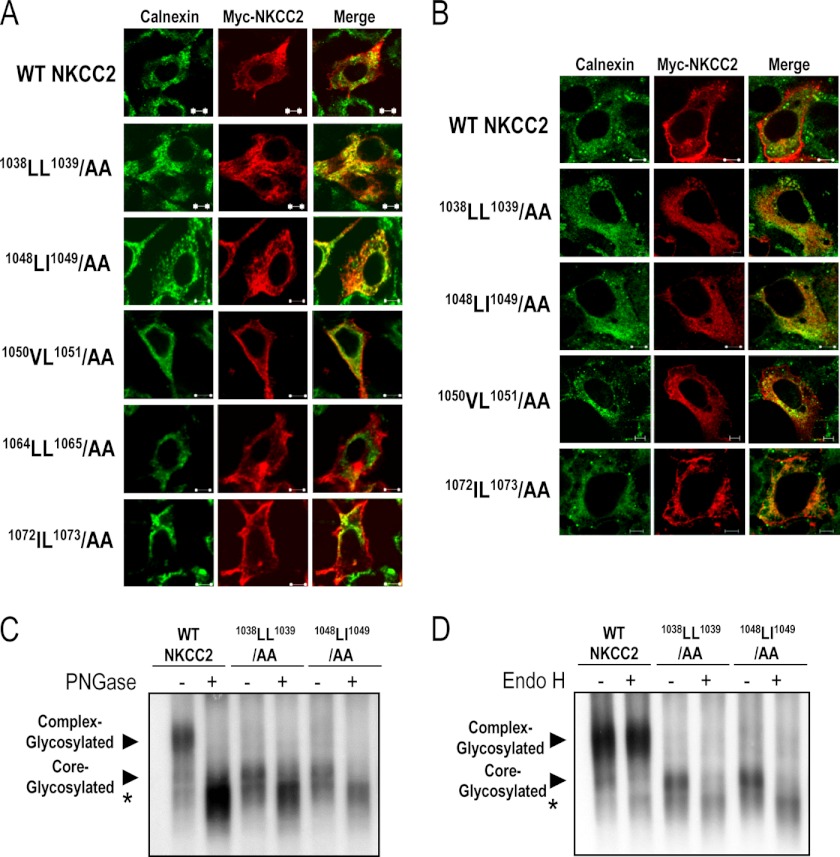FIGURE 3.
Substitutions of 1038LL1039 and 1048LI1049 motifs results in ER retention. Transiently transfected HEK cells (A) or OKP cells (B) with wild-type or mutant NKCC2 proteins, as indicated, were fixed and permeabilized, and then cells were stained with mouse anti-Myc (Texas red; red)) and rabbit anti-calnexin (fluorescein isothiocyanate; green). Yellow, overlap between the Myc tag of NKCC2 protein (green) and the ER marker (red), representing co-localization of the proteins. The white bars represent 5 μm. C and D, glycosidase sensitivity of wild-type NKCC2, 1038LL1039/AA, 1048LI1049/AA proteins expressed in OKP cells. Total cell lysates of OKP cells expressing NKCC2 proteins were incubated in the presence (+) or absence (−) of peptide:N-glycosidase F (PGNase) or endoglycosidase H (Endo H) for 1 h at 37 °C. Proteins were separated by SDS-PAGE and probed by anti-Myc antibodies. The positions of the core (immature) and complex-glycosylated (mature) proteins are indicated. *, non-glycosylated form of NKCC2.

